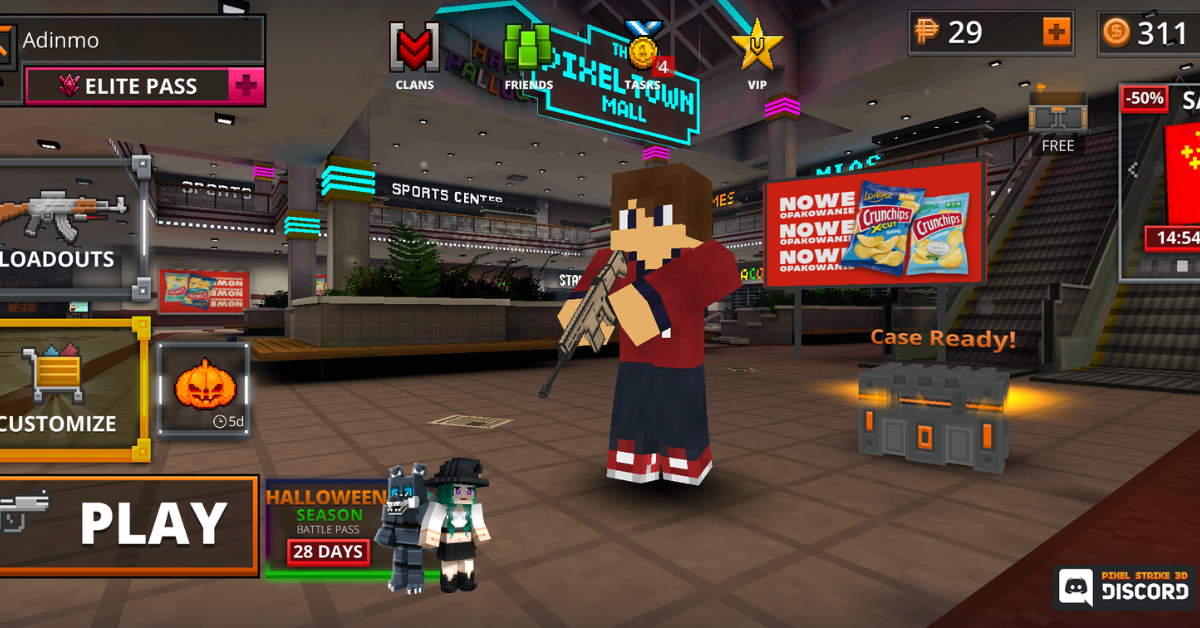In a noisy digital landscape, why is gaming so important for advertisers?

There’s no slowing down for digital any time soon, we’re favouring digital channels more than ever with our time spent consuming content expected to reach a daily average of 8 hours and 23 minutes (very accurate) in 2024. Media consumption has shifted considerably over the past few years and what we considered normal then is no longer the same now.
We have more content at our fingertips and are becoming even more selective with the types of content we consume – so where does gaming fit in all of this and why should advertisers care?
Our ad tolerance is decreasing at a significant rate, with Kantar (2022) reporting that 66% of consumers look to pay for a subscription service to avoid advertising, 48% are using ad blockers and 45% report that they stop watching content when ads appear.
To add to this, traditional media channels are becoming background noise, the digital space is already crowded with ads and our attention levels are at an all-time low. Not great news, right? Not quite – this is where gaming can fill what I like to call ‘the blind spot of advertising’.
The average consumer is spending over an hour a day playing games, and gaming for the most part is a highly attentive environment. Unlike TV, VOD or even audio channels, gaming doesn’t have to battle it out for our eyeballs, it requires 100% of the user’s focus. This makes gaming not only valuable because of its lengthy dwell times, but also because of its unparalleled when it comes to attention.
Mobile gaming is no exception; this year, 35% of all media consumption will occur from smartphones. Mobile gaming is our most popular preference, with 68% of internet users stating they play games on their smartphones and the more accessible mobile gaming becomes with lower priced smartphones and more wireless infrastructure (5G capabilities) that number will continue to increase.
It’s never been easier to reach gamers, and the technology to deliver advertising within games is improving continuously at an accelerated pace. There are nearly 3bn gamers globally, so it’s important to ensure you’re targeting the right audience and in the right environments.
The perception of the average gamer is misconceived; no longer do we associate players with bedroom-residing teenagers eating junk food; playing audiences are much more diverse with baby boomers and the older generation driving adoption playing puzzle games such as ‘Wordl’ and ‘Sudoku’.
This is where targeting becomes your friend; at AdInMo we are pioneering addressable mobile in-game advertising by making it easier for advertisers to identify a player’s persona and show them the right advert using different signals that still mask the user’s identity. Going beyond demographic data, by understanding their gaming patterns and the types of games they play, you can start to paint a picture of different player types and understand whether they would be relevant for your product/service.

“How do I know if my in-game campaign is actually working?”, you ask? It’s a great question and not one we should shy away from. There have been huge developments when it comes to standards within gaming over the past couple of years that allow you measure the success of a gaming campaign. In 2022, AdInMo was part of an industry taskforce that developed measurement standards for in-game advertising introduced by the MRC and IAB that set out to benchmark fair in-game ad measurement for viewability.
The MRC and the IAB state:
“a static or display ad impression is counted if 50% (or more) of the pixels in the ad were in focus in the viewable space of the display device for a duration of at least one continuous second post-ad render.
Dynamic or video ads also require at least 50% of the ads pixels to be in focus in the display device view, but the duration requirement is upped to two continuous seconds.”
When it comes to brand safety, AdInMo partners with Pixalate to validate our inventory is fraud and bot free which means you can be certain that a real life human is actually playing the game that your ad is featured in. But it doesn’t stop there, some brands are right concerned that their ads are not placed next to content that contains any violence or “red-blood”, and there are controls to make sure those preventative measures are in place. On the flip side, should you only want to target mature audiences such as 18+ or 21+ or protect younger audiences from being exposed to your ads, then deterministic age targeting will help you achieve this.
Another brilliant way to measure in-game advertising is through brand lift studies (BLS) which typically aim to measure things like brand recall, ad retention, and purchase intent. Depending on what you aim to get out of the BLS, it’s pretty useful in understanding things like, how your brand stacks up against your competitors or a/b testing whether the creative had the desired effect it intended.
It’s important to understand that gamers are extremely passionate about their gameplay and non-intrusive advertising that is integrated seamlessly into gaming environments means that gamers are exposed to your brand without any disruptions which in turn can yield positive results for your brand. In Rise of Gaming: Consumer Sentiment Study by Dentsu (April 2022), it found that 66% of gamers feel positively about companies and brands in-game.
In general, for brands to be effective in the digital space they need to establish a 1:1 relationship with their consumers and that’s achieved primarily through brand building. Building your brand is arguably the most important stage of the funnel, optimizing towards clicks is an outdated performance metric which ignores the fundamentals of engagement.
Gaming unlocks a myriad of opportunities but mostly by providing an effective way for advertisers to build their brand is by placing their ads in an environment with positive sentiment, undivided attention and shines through the blind spot of advertising
More…
Gaming shines on La Croisette: A CEO’s week at Cannes Lions
Walking up and down the perennially sunny La Croisette last week I was really excited about how this year’s Cannes Lions 2024 truly spotlighted the marketing industry's increasing focus on gaming as an innovative, impactful, and scalable channel to reach engaged...
Trend or Table-stakes? Have your say on the future of Hybrid Monetization in Gaming
AdInMo Advisor Tiffany Keller shares her views from her career at the intersection of game development and in-game advertising on the evolution of monetization trends. We want to hear your views as well! Complete this 3 minute survey to be entered to win a Gamesforum...
AdInMo Developer Shoutout
Check out these top-notch mobile games that are turning in-game advertising into an art form! InGamePlay integrations from NOXGAMES, Promotion Software and Smokoko are visual proof ads can actually enhance gameplay, as well as providing incremental revenue. Let's...




